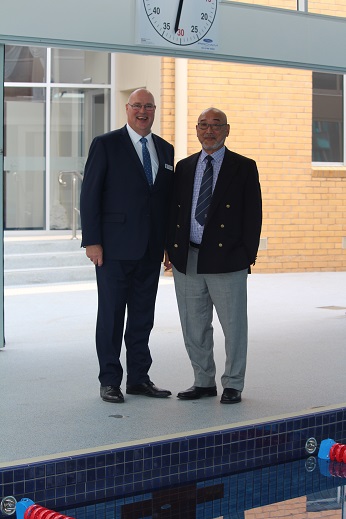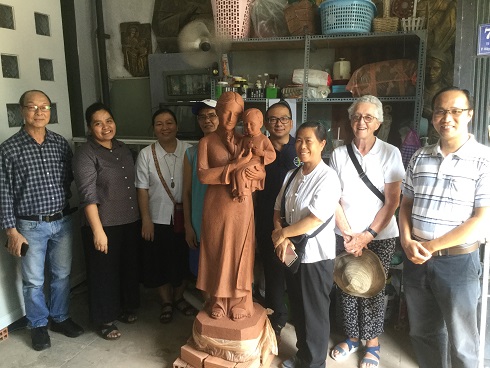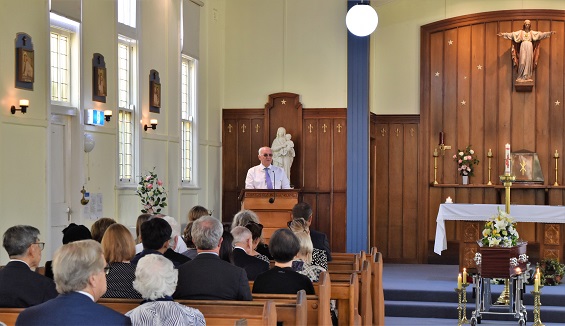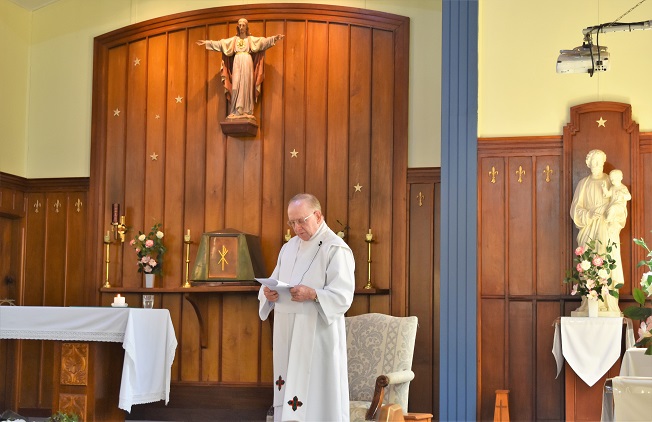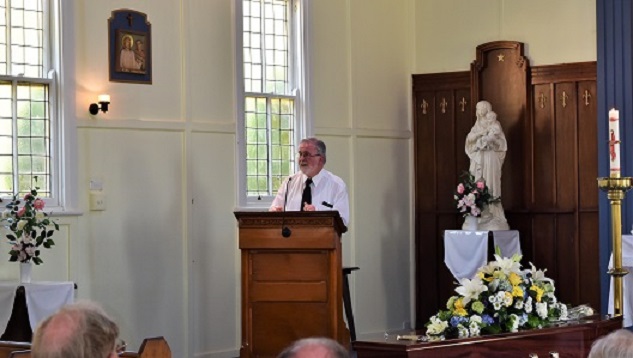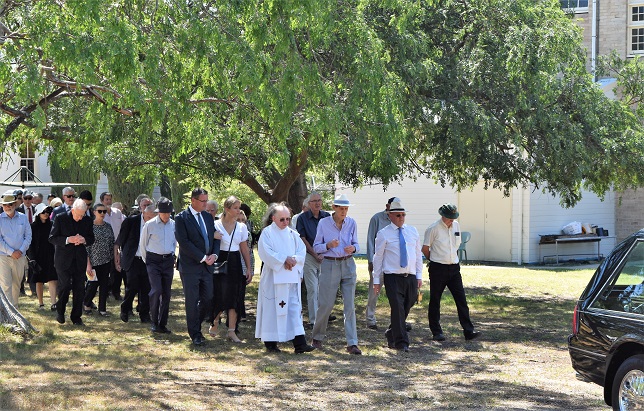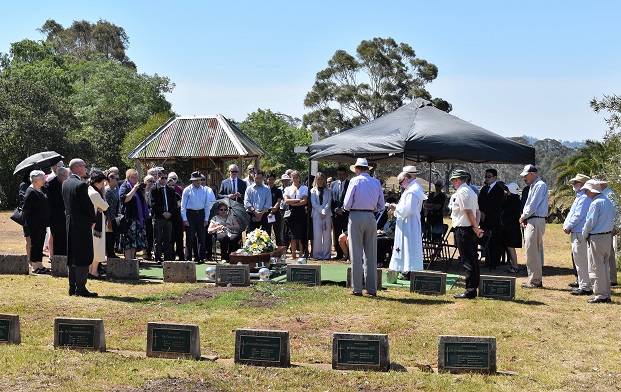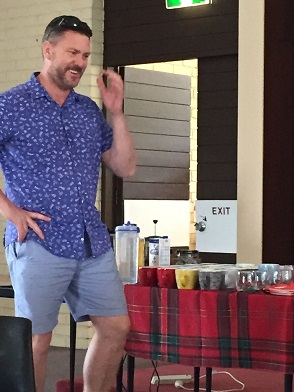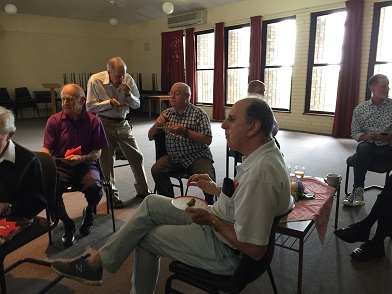Peter MALONE
40th ANNIVERSARY OF SILOAM, THE PROGRAM FOR SPIRITUAL DIRECTORS, 1979-2019.
40th ANNIVERSARY OF SILOAM, THE PROGRAM FOR SPIRITUAL DIRECTORS, 1979-2019
SILOAM, a program for Spiritual Direction, celebrates 40 years in 2019.
The program was established by Brian Gallagher MSC, drawing on his studies in Boston in spiritual direction and a Clinical Pastoral Education program.
Sacred Heart Monastery, Kensington, was the first venue. In 1980, it transferred to Sacred Heart Monastery, Croydon, Vic, where it continued until it became part of the Heart of Life Spirituality Centre in 1983 (and its several venues in Surrey Hills, Canterbury, Wantirna, Box Hill).

Its aim and scope, history and courses, the list of graduates to 2015, can be found in Heart of Life Spirituality Centre, A History (Peter Malone MSC, 2017).
Here is a list of members of the Chevalier Family who have completed the SILOAM program, as well as a list of staff members and course presenters.
MSC
Brian Gallagher
John Conroy
John Flynn
Peter Malone
Paul Castley

Terry Naughton
Tarcis Wignyosomarto
Noel Mansfield
Chris Chaplin
John Kelliher
Juan Diamante Jr
Patrick Bai
Mark Hanns
Steve Dives
Alo Lamere
Dominic Gleeson
Joshua Gopini
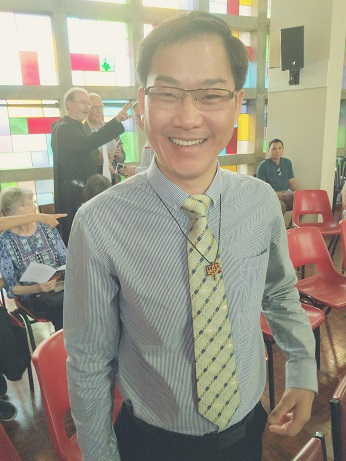
Thang Nhu Nguyen
OLSH SISTERS
Margaret Fahey
Cathie Mwagioidi
Rotee Uriam
Rosaleen O’Brien
Mary Manuera
MSC SISTERS
Tess Venker
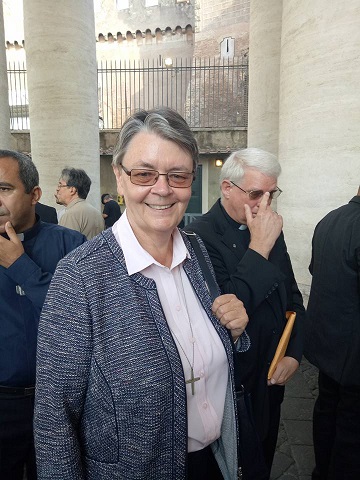
Mechtilde Schnieder
And
Paul Beirne
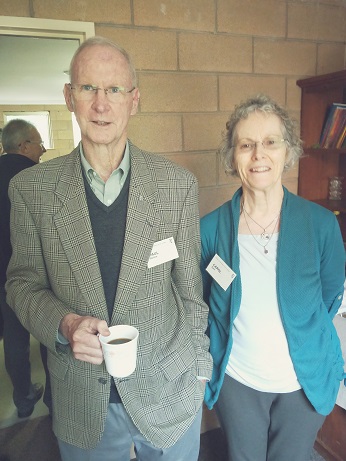
Carol Dyer
Clare Shearman
DIRECTORS
Brian Gallagher, 1983-1991
Peter Malone, 1992
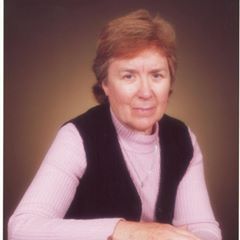
Susan Richardson, 1993=2001
Cheryl Bourke, 2002-2007
Susan Richardson, 2008-2013
Paul Beirne, 2014-
STAFF
MSC
Brian Gallagher
Peter Malone
Paul Castley
Frank Andersen
Frank Fletcher
Philip Malone
Chris Chaplin
OLSH
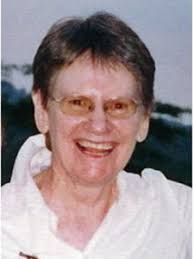
Robyn Reynolds
MSC
Anneliese Reinhard
Tess Venker
Rosalind Cairns
Reception
Margaret O’Loughlin
Phyl Coffey
Peter Curry
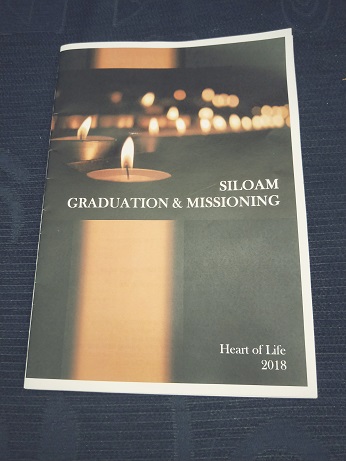
Siloam participants have come from:
Australia
Germany
India
Indonesia
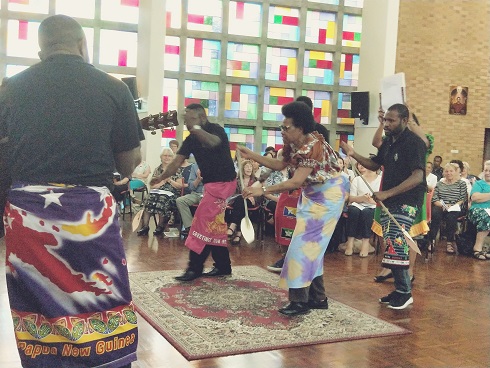
Papua-New Guinea
Philippines
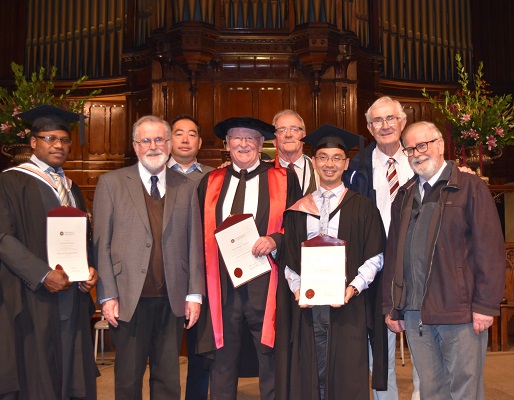
CELEBRATING THE FAREWELL TO THE MSC FROM THE RESIDENCE AT DARAMALAN COLLEGE.
CELEBRATING THE FAREWELL TO THE MSC FROM THE RESIDENCE AT DARAMALAN COLLEGE.
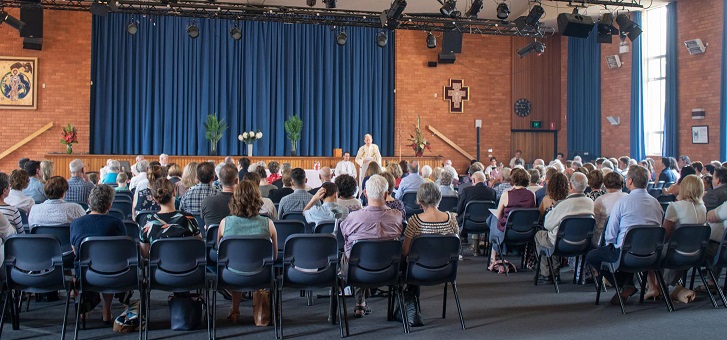
On 8th December, Foundation Day for the MSC, a Mass was celebrated to honour the MSC presence at the College, the withdrawal by the last three MSC, Fr Harold Baker, Fr Jim Littleton, Br John Walker. You will read the background in the text of Fr Littleton’s homily below.
Many MSC lived in the Residence since the 1960s. The building will be incorporated into the school.

Homily for 8th December 2019, James Littleton MSC
The 8th day of December is a very important day in the history of the Missionaries of the Sacred Heart – and so it is fitting that we have an MSC celebration today.
On the 8th of December1854 Fr Jules Chevalier founded the Society of the Missionaries of the Sacred Heart in Issoudun in central France.
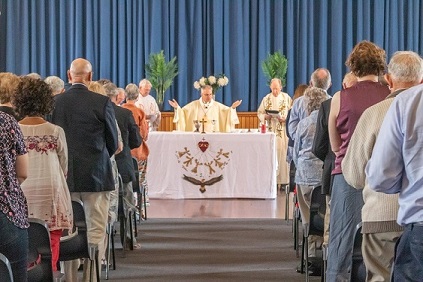
From very small beginnings and despite some apparently insuperable difficulties, our religious congregation has spread all over the world. Today we have Missionaries working in 55 different countries in all five continents.
Our worldwide membership reached a peak of about 3300 members in the 1970s, but now is only about 1600. While numbers have decreased significantly in first world countries, they have increased remarkably in third world countries. Our withdrawal from Daramalan College is symptomatic of these worldwide changes. In the 1970’s there were at one stage 26 MSC living and working at Daramalan; this has been reduced to only a few in recent years.
It is in this context that the scriptural reading from the Letter to the Hebrews to which you have listened is apposite. It begins with the phrase: “There is no eternal city for us in this life but we look for one in the life to come.” I do not have exact statistics on the number of MSC who have lived and worked at Daramalan but it could be as many as 100. Fr Harold Baker holds the record of having been here for 45 years, I come next with 31 years. It is sad for us to leave, but as Scripture says: “There is no eternal city for us in this life.”
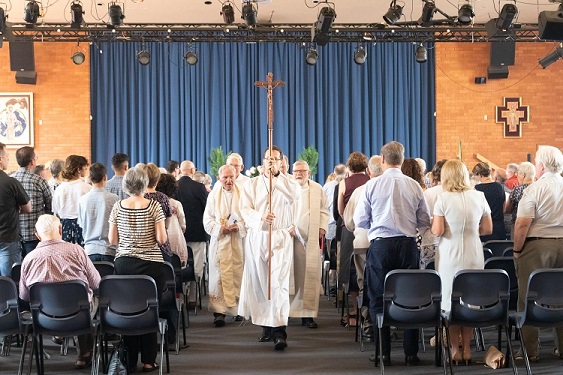
The Responsorial Psalm to the first reading is taken from Psalm 21 and it contains the beautiful phrase which you have recited: “O God you come to meet us, blessing us with success”. There is no doubt that over the 58 years of its existence, God has blessed the work of
the staff at Daramalan and here I refer particularly to the work of lay staff. Many have absorbed the MSC ethos and live it out in their private lives, as well as in their relationships with students and other staff members. I venture to say that the MSC Charism is more alive now and more clearly articulated than when there were many professed MSC on the staff. And despite occasional problems the achievements of the College over the years have been spectacular. God has indeed blessed the College.
The Message of the reading for today’s gospel would be summed up in the phrase: “Go out to all the world and tell the good news”. This was the instruction Jesus gave to the disciples before his ascension into heaven. The Church has done that over the years sometimes with success and sometimes with mistakes. The MSC are a missionary group. Together with lay staff, we have endeavoured to bring the Good news of God’s love to the people of Canberra. And we have taken confidence from the promise of Jesus in today’s gospel: “Know that I am with you always; yes, to the end of time”. A beautiful promise that gives all our staff much confidence.
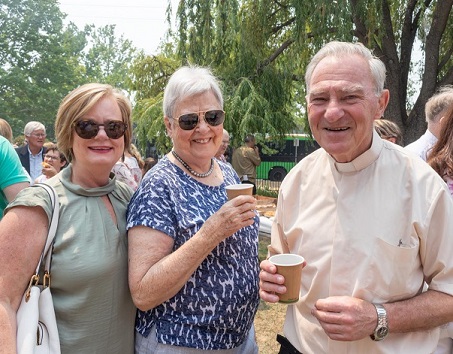
With friend and supporter, Bishop Pat Power
Might I conclude by quoting from two numbers of the MSC Constitutions: “As Missionaries of the Sacred Heart we live our faith in the Father’s love revealed in the Heart of Christ. We want to be like Jesus who loved with a human heart; we want to love through him and with him and to proclaim his love to the world”. (Number 10)
“Following the example of Jesus, we will strive to lead others to God with kindness and gentleness, to unite them to him by love and to free them from fear”. (Number 12)
Those two numbers express something of the spirit of Daramalan at this time and for that we give thanks.
Photos: thanks to Bernard Kane.
Jim and Harold with Michael Fallon,
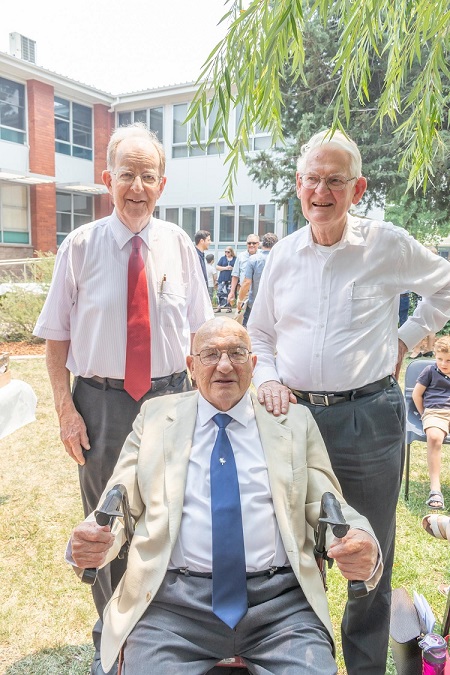
MSC EDUCATION, TRANSITION TO A LAY DIRECTOR, MARK McGINNITY
MSC EDUCATION, TRANSITION TO A LAY DIRECTOR, MARK McGINNITY
In recent decades, Jim Littleton, Denis Uhr, Bob Irwin, have served in this rolel, Director of MSC Education, for our four colleges, Downland, Chevalier, Monivae, Daramalan – Mark McGinnity, finishing his term as principal of Monivae College, now takes on the responsibility.
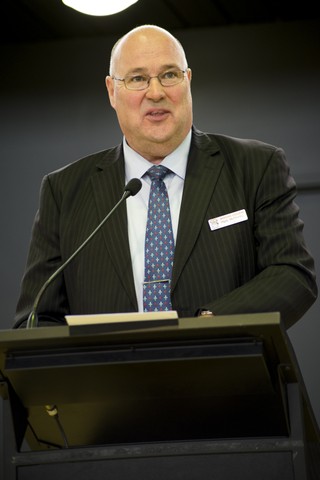
His comments appeared recently in the MSC printed magazine.
Greetings to the wider MSC community.
At the end of 2019, I conclude my tenure as Principal of Monivae College, Hamilton, and will be taking over from Father Bob Irwin as the Director of MSC Education (Australia) – very “big shoes” to fill, indeed! By way of introduction, I’ve been asked to provide a brief career synopsis.
With over 35 years as a Catholic educator, my time at Monivae was preceded by a range of leadership roles at Xavier College, Kew; St Ignatius College, Riverview; St Joseph’s College Hunters Hill; John Paul II Senior High, Murrayong, and St Pius X College Chatswood. Looking back – I would like to think that my leadership style has been one focused on the provision of positive encounters and strategic outcomes, constant learning and personal reflection. The spiritual formation of students and staff has been a constant throughout my career.
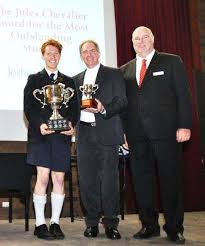
They say that “all good things come to those who wait”. For myself and my wife, Sue, our time at Monivae, immersed in the MSC charism, has been worth the wait! We have found our spiritual home.
Looking forward to the new role – I am therefore grateful to have the opportunity to continue a career within a tradition that holds “relatedness as the care of all educational pursuits”. Now more than ever. Collegial support amongst educational leaders is something to be nurtured and fostered. In a regional setting, this has been a particular focus of my time at Monivae and I look forward to supporting our MSC Principals and College Boards to ensure the MSC charism continues to flourish in our schools. As a recent graduate of the Australian Institute of Company Directors, I view governance as an important aspect of modern educational leadership. Over the years, I’ve been fortunate to have held numerous positions on Boards across the Education, Health and Sports sectors. Experiences gained here will hopefully help me serve both our MSC schools and the Chevalier Institute well.
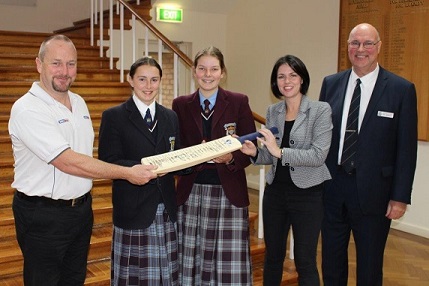
In Term One next year, it is envisaged I will “shadow” Bob Irwin as he attends Board meetings at our four schools. I hope to meet new faces and renew acquaintances with others as we “make the rounds” and as stated earlier – “very big shoes to fill”, prayers please.
OUR LADY OF THE SACRED HEART, IMAGES VIETNAM
OUR LADY OF THE SACRED HEART, IMAGES VIETNAM
With the Feast of the Immaculate Conception transferred to Monday this year, we have a Marian theme today which nicely follows Foundation Day.
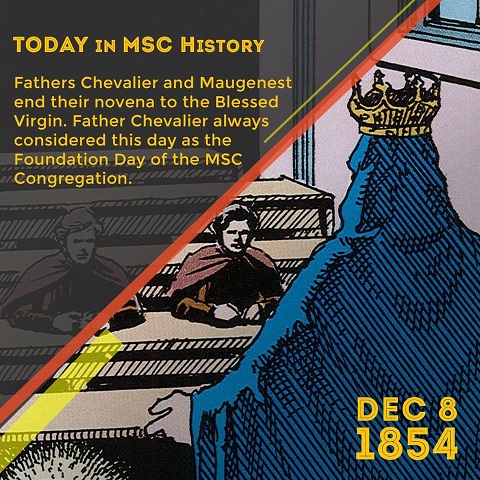
Bob Irwin writes:
A few days ago we visited an artist’s house here in Saigon. At the request of Hoang, the community leader here, he has been working on a statue of her, that fits Vietnam style.
He has done the first clay model, and OLSH, MSC men, and MSC sisters were invited or come and see and suggest changes etc. so off we went. It was good timing as Tess Ward was visiting.
MSC Thoi, Toan and Hoang with OLSH from Philippines, Vietnam and Tess, plus MSC sister from Korea with the first clay model and artist.
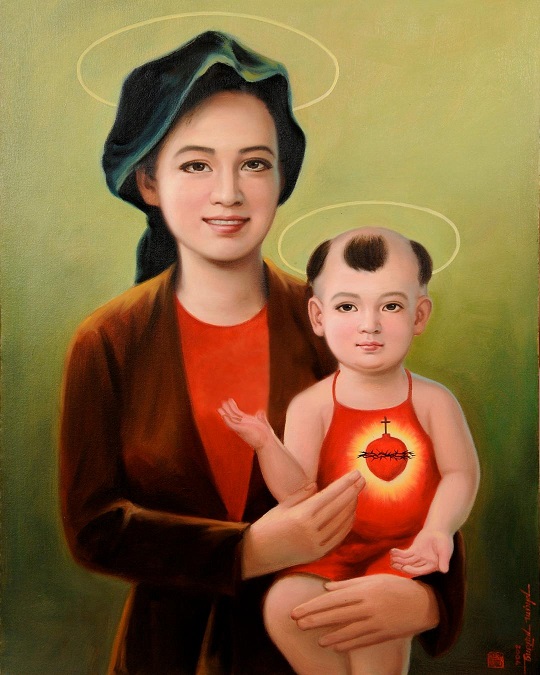
This is the first picture made of OLSH in Vietnam, based on the original commissioned by Peter Huan. The unusual hairstyle of the child is, I believe, traditional Vietnamese royalty style.
MSC FOUNDATION DAY, DECEMBER 8TH – 165 YEARS
MSC FOUNDATION DAY, DECEMBER 8TH – 165 YEARS

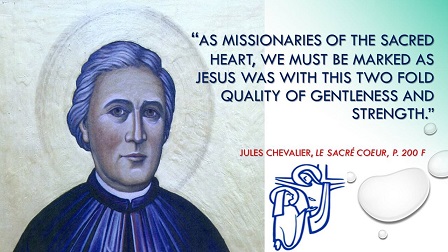
This offers an occasion for reflecting on the MSC Spirit and Spirituality.
A talk given in 2004 by Rochus Tatamai, MSC, today bishop of Kavieng in PNG, on the occasion of an assembly of the French/Swiss Province presents the MSC tradition very well. At the time Bishop Rochus was part of the Basilica team in lssoudun and he wanted his talk at the Assembly to be a word of thanks for what the MSC missionaries had done for his people.
How do we live this tradition today in over fifty countries around the world?
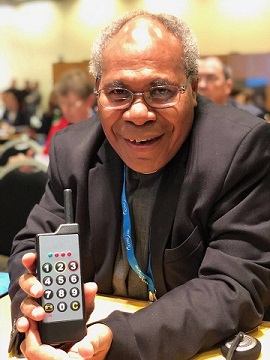
“As Missionaries of the Sacred Heart, you helped us to respect ourselves and to love each other, especially to love our traditional enemies. You gave us the teaching of Jesus Christ, the Good News. You baptized us into the Body of Christ.
As linguists, you learned and you spoke our languages . You wrote our dictionaries and you taught us our own grammar.
As diplomats, you negotiated with civil authorities for us. You taught us about our own human rights and about religious freedom.
As mediators, you reconciled tribes that were at war. You promoted other cultural values such as the mutual exchange of gifts in order to reach reconciliation. You courageously opposed the traditional law of vengeance (pay back). You won the trust and respect of our people.
As builders, you built our churches, our schools, our clinics, our roads, our bridges and our ports.
As teachers, you taught us to read and write.
As anthropologists, you studied our social structures and you entered into our Melanesian vision of the world. You used our chants and dances to express our faith in the liturgy and in the celebration of the sacraments.
As mystics, you studied our religious beliefs and our initiation rites. You explored our sacred space and time. We recognize you as spiritual men, men of prayer, men of God.
As experts in agriculture, you taught us new ways to cultivate the earth and to produce crops.
As doctors, you healed us with your "miracles" when you gave us your medicine and your knowledge.
And as Missionaries of the Sacred Heart, you gave us a God of love who fills us with hope.
You are the entire religious province of France/Switzerland which has always considered my country a priority in the service of the mission, with all the Fathers and Brothers already deceased, often at a very young age, who gave their lives for us.
To all of you great THANKS and to the God whom you have represented, glory and praise forever!”
Rochus Tatamai, MSC, lssoudun, March, 2004

FIRST FRIDAY DECEMBER, CHEVALIER FAMILY POSTER AND JUSTICE THEME
FIRST FRIDAY DECEMBER, CHEVALIER FAMILY POSTER AND JUSTICE THEME
Visitors to the site will have noticed the First Friday posters during the last six months.

They have been prepared by members of the Chevalier Family, MSC, OLSH, MSC Sisters, Lay MSC as a contribution to our Heart Spirituality.
The focus is on Heart Spirituality and Justice, in practice and in prayer.
And a request for your support.
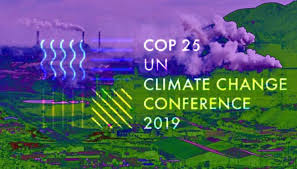
The December poster comes in the context of the COP 25 gathering in Madrid – the possibility for all nations to move forward on our planet’s future with wisdom and courage. (Check out the recommendation for Disney’s feature Wall-E – you will enjoy it.)
During this Advent we ask for the graces to be open to the movement of the spirit as we prepare for the coming our Lord in 2019. At this time, we also remember the importance of the COP 25 (Conference of the Parties)..
Leaders from around the globe will be finalize the rules for the implementation of the climate change promises under the Paris Agreement. Our Vatican leaders and Catholic organizations will be promoting the guidance of 'Laudato Si’ in these deliberations. We join them in prayerful support.

SOME CATCH-UP PHOTO STORIES
SOME CATCH-UP PHOTO STORIES
Three items today:
- Paul Stenhouse, burial.
We were unable to include photos from Paul Stenhouse’s burial at Douglas Park last week. With thanks to the photographer from St Mary’s Towers
- The annual morning tea at Kensington Monastery, the Chevalier Resource Centre.
- News of a PNG Lay MSC meeting.
---------------------------------------------------------------------------------
Paul Stenhouse, burial.
Barry Smith welcomed those gathered in the Chapel.
Steve Dives officiated.
Peter Malone spoke of Paul and his life and ministry.
All processed to the cemetery.
Burial
Paul’s brother, Richard, and family.
---------------------------------------------------------------------
The annual morning tea at Kensington Monastery, the Chevalier Resource Centre.
Kensington Community and the Chevalier Resource Centre gathered
with the Chevalier Institute (with Director, Alison McKenzie, and Administrator, Brett Adamson)
for the annual thank you morning tea,
_______________________________
MSC LAY ASSOCIATES CONFERENCE:
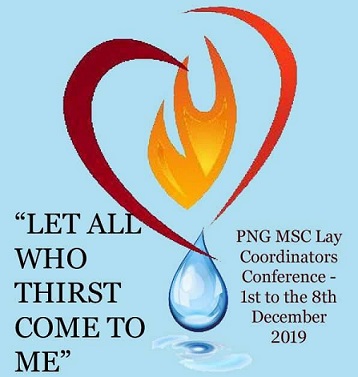
THE SACRED HEART OF JESUS BE EVERYWHERE LOVED..
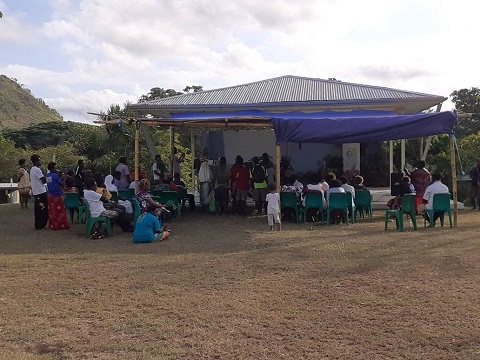
Today the MSC Lay Associates throughout PNG commences their week long workshop
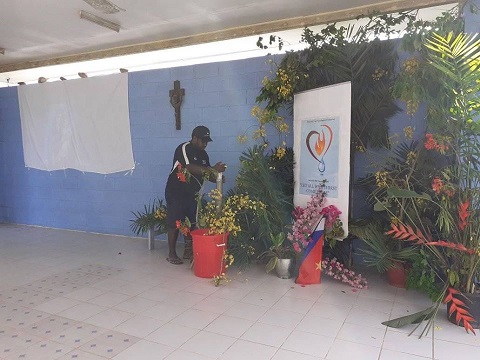
at MSC De Boismenu College Bomana with the Theme: "Let all Who Thirst Come To Me"
-----------------------------------------------------------------
ACKNOWLEDGING TERRY HERBERT MSC, 80
ACKNOWLEDGING TERRY HERBERT MSC, 80.
Terry Herbert turns 80 on December 4th. Here is an article he wrote earlier this year for the OLSH Randwick Parish Bulletin, his perspective on his life, call to the MSC and his ministry
A Blessed Life Lived Fully
Terry Herbert MSC
Bowral, on the Southern Highlands, was a small country town when I was born in December 1939. It was quiet; we lived near a large bush block; motor vehicles were few, and we walked to Mass before our first vehicle in 1947. Dad gently got us moving on Sunday mornings. If at the Church after 7:20 (for 7:30) we were ‘late’!
Mum, youngest of five, grew-up on a farm on the outskirts of Bowral; Dad was from Sydney. We were brought-up on dairy products - full cream milk, farm fresh eggs, vegetables, etc. My parents married at St Patrick’s Church Hill in 1936. Only five people attended - Mum, Dad, Dad’s brother, Mum’s sister, and the priest! Mum was Catholic, Dad converted from C of E. I wonder…! Dad spent a short time as a Carpenter in the Air Force during Darwin’s bombing. My parents’ influence on me was profound. Their presence, respect, patience, forgiveness, self-sacrifice, generosity, hard work, and especially consideration - all ‘faces’ of love honed by suffering, living through the Depression, and Dad’s traumatic experience in Darwin.
I enjoyed country living; open space, free creative quiet time, cycling, tennis, inventions in Dad’s backyard workshop, altar serving for seven years, primary school with OLSH Sisters, secondary with MSC brothers and priests, and an all pervading interest in ‘weather’ and prompted by Bro Ross msc (my best teacher) to write a weekly weather article in Bowral’s local paper for six years from age 13.
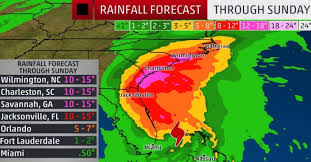
My active yet quiet and sheltered background enhanced that gentle ‘inner voice’, idea, interest, heart-motivator, desire - the gentle inspiration of God’s Spirit towards a religious vocation; all under the secure umbrella of loving yet gently demanding parents. I once casually said to Mum, about some issue, ‘I can’t be bothered’. She turned and fronted me (all her 149cm) with a firm, ‘be bothered’. I’d been a priest for about six years.
Teenage - and the occasional ‘voice’ persists - amongst my incredibly full life, which included building and racing model yachts, inventing sensitive wind vanes. I almost lived on tennis courts. Boredom was a non-event even without TV and other technology. I probably caught a healthy work ethic from my parents, studied hard at school, yet struggled to pass exams. My attitude was, ‘I don’t have the brains; wouldn’t be good enough’. After 60+ years, nothing much has changed!
I later learnt that one doesn’t need to be perfect. ‘It’s God’s work. Best to listen to one’s heart, follow it, trust it with goodwill and generosity. The rest, they say, is history. In 2018, I’m 56 years an MSC, and 47 years a priest. It’s been a wonderful, full life - not without difficulties. But God never lets us down. As Dad said, teaching me to swim when I was seven: ‘Daddy won’t let you drown’.

Chevalier
Though awarded the diligence prize, I still failed the Leaving Exam at my second attempt. That was devastating. Dad offered me a job in his Building Firm Office, doing the accounts, wages, writing the cheques, all good prep for later running a Woodwork Budget when teaching the subject.
I was 18 when I first went out with a young lady. Dad (again quietly and calmly) over ten minutes, asked me. ’Who is she? Where does she live? What religion is she? What’s her father do? Where are you going? What time will you be home? - in that order! Then, simple instructions about respect and courtesy included ‘escort her to the front door (not front gate)’. Can’t recall the Film nor Cafe we visited!

After a year, a position became vacant at Sydney Weather Bureau…two years to ‘test’ my life-long passion. So good was it, that I arrived at work up to an hour early (no extra pay) to get in touch with the latest, the better to inform the public. Budgeting was tight - board, meals, train fare to Bowral, each weekend. My vocation ‘call’ persisted, and almost daily I spent time at St Patrick’s Church Hill, discerning my vocation.
If one is agitated, forget it; if peaceful, as I was, as is God’s Spirit, listen and follow. Thankfully I’ve never looked back. A fellow employee (a New Zealander) asked me to help him show-around a couple of his visiting NZ friends. Judy and I resonated, but so did my vocation-call! After another Film/Coffee, I revealed. Her response, ‘Terry (Turree), I don’t really understand what you’re doing; I can only wish you the best - but don’t forget, I love you’. That was mutual.
And so to Priesthood
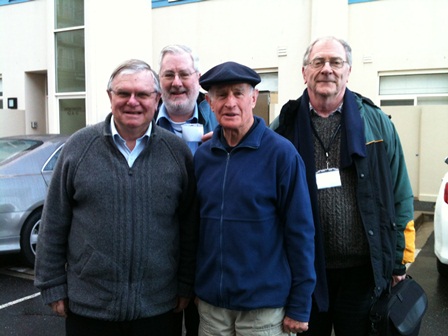
At a National Council of Priests Conference
I was Ordained (with about 25 others) by Cardinal Gilroy at the Cathedral in August 1971 during a massive thunderstorm which I couldn’t go out to observe! My three years post school were invaluable as were my final four years at St Paul’s Late Vocation Seminary at Kensington. I can now better appreciate, how God was gently inviting and preparing me for future life as an MSC priest. In St Paul’s first year in 1968, Fr Jim Cuskelly msc offered us ‘a completely new start to Priest-Formation’, move away from a clerical, enclosed Seminary-model, and in the spirit of Vatican II, offer a more-open, pastoral formation befitting our Australian Church.
In my first year I coached a local 8yr old rugby league team, did some part-time teaching on our weekly day off, visited families, and much tennis for exercise. It proved a good transition-experience to visit Judy, her husband and sons in NZ a couple of times during 1970’s.
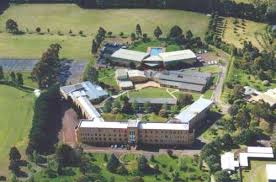
Monivae
Study at St Paul’s was a ‘breeze’ by earlier comparisons. From 1966, I’ve been mostly with our education apostolate - Chevalier College 38 years, Monivae College Hamilton for 7 years, and part time teaching between, including three years parish based - one at OLSH Randwick in 1986, and two at Henley Beach, Adelaide. These latter two venues involved regular local school liturgies and a little classroom time at schools.
At Randwick 1986, I attended the Ministry Leadership Course at the Centre in Frances Street. That was an experience! Apart from the much-appreciated forward-looking theology, it involved no written assignments; rather, reflect on a topic and share in groups. Except, with 16 women and three men, it was for me initially daunting, but formative, tapping-into my ‘feminine’. In hindsight, all of the above (and much more) has been formative for my ministry of teaching in Co-ed schools, looking after Boarders, sport-coaching, extensive Parish Mass Supply on the Southern Highlands and over Victoria’s Western Districts, while at Monivae College, helping prepare and preside at nearly 400 Weddings and many Baptisms, Funerals, as well as Hospital and Family visiting.

Cyclist - actually not Terry!
During my years as an MSC Priest, I’ve been able to combine full-time Ministry with many leisure activities and interests - woodwork (my preferred subject to teach); teaching science; weather recording/predicting; sport. I played comp tennis for several years, and raced with a couple of pro cycling clubs for 15 years; extensive bushwalking and camping in four States, with groups and alone.
My two five-day solo treks from Mittagong to Katoomba navigating across the Blue Mountains (and getting ‘lost’ for a time), were deep-digging character formers, among other benefits. I’ve been able to live totally dedicated as a priest and religious, yet combine the normality of my life interests.

The gentle ‘hand of God’ has been clearly in it all. Living as a priest/religious is about a deep, personal relationship with Jesus whose Spirit we all share in serving, loving people into fuller life in Him. There’s a ‘normality’ about that in our many diverse life-enhancing interests. Celibacy, freely chosen by me as a Religious, is a distinct way of loving; a freedom to form deep, loving, personal relationships with all people. Obedience has nothing to do with ‘under the thumb’. That’s tyranny! It’s about deep, reflective, compassionate heart-listening in prayer, towards offering the best, most-loving responses to the people one serves. As Pope Francis says, it’s about going-out to people from one’s Office.
The influence of my parents has been paramount as well as the essential place of deep prayer. I now find I’m almost constantly living in God’s presence, more easily ‘seeing’ that presence in others. One gradually becomes a close companion/ disciple of Jesus, whose beautiful Spirit we all share, but can so easily miss if other pursuits crowd one’s heart.
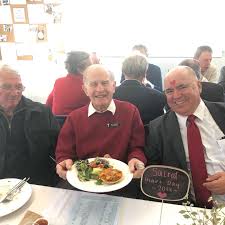
I’ve learnt to frequently reflect on my life experiences, in light of the Gospels and Paul’s letters; to heart-listen to God’s gentle inspirations, hasten slowly with decisions, be gentle with myself (and hopefully with others, as God is with me), be much more a ‘listener’ than a ‘teller’, honed by one’s Cross. To be a true disciple of Jesus, entails accepting life’s crosses and suffering. That touches one’s vulnerability, strips away self-reliance, self-righteousness, pride, etc. and helps to empty one of self-importance, to make ‘room’ for a childlike heart which trusts God and allows God’s free ‘movement’ and inspiration towards enriching others’ lives.
Yes, indeed, life is good, to be lived well, in the certain hope of Life beyond our imagining in the New Creation. It was (over)time for me to step-aside from schools and over-active Ministry, at the end of 2016. I’m enjoying and appreciating a more-prayerful life in our large Kensington Community, with many “outside” ministry-enrichments, and re-joining Marriage Encounter. I hasten to add my ‘L Plate’ just gets bigger.
WELL WORTH WATCHING, INTERPRETING 'THE TWO POPES'
WELL WORTH WATCHING, INTERPRETING 'THE TWO POPES'
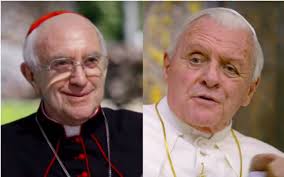
THE TWO POPES
UK/Argentina/Italy/US, 2019, 125 minutes, Colour, Jonathan Pryce, Anthony Hopkins, Juan Minujin. Directed by Fernando Meirelles.
There are many reasons, good reasons, to see The Two Popes. Some of them are worth noting before the consideration of religious themes.
- First of all, there is the articulate and elegant writing by New Zealand-born screenwriter, Anthony McCarten, who was responsible for the screenplays of The Theory of Everything, a portrait of Stephen Hawking, The Darkest Hour, a portrait of wartime Winston Churchill, Bohemian Rhapsody, a portrait of Freddie Mercury and Queen. He has done his research on Pope Benedict and Pope Francis, drawing on many of their statements as well as using his imagination to create conversations between them. The screenplay is both serious and funny, in English, Spanish, touches of German, Latin, and a significant component of God-language.
- Then there are the performances, two fine actors, Anthony Hopkins a credible Benedict XVI, a ‘behind the scenes’ performance Jonathan Pryce a vigorous Francis. The film has a fine Brazilian director, Fernando Meirelles, whose films include City of God, The Constant Gardener, Blindness – and the opening of the 2016 Rio Olympic Games.
- And the look of the film is striking, the stylish photography, the Vatican settings, the 2005 conclave, the Sistine Chapel, the papal apartments, St Peter’s and the Piazza, the Cardinals staying at Santa Marta, a visit to Castel Gandolfo. By contrast, the film brings Buenos Aires alive, first of all in the 21st-century, the outdoors ministry of Cardinal Bergoglio, then black and white flashbacks to his younger years, his vocation decisions, and then a dramatisation of the drastic years of the Generals, especially in the 1970s.
- There are also some surprises with the musical score, not just the expected serious and religious themes, some classical music, but a number of more contemporary songs, creating atmosphere as well as some touches of irony.

Some articles about the film indicate that it is principally conversation between the two popes, their meetings in 2005, Cardinal Bergoglio’s visit to the Vatican in 2012 to persuade the Pope that he should resign as Archbishop of Buenos Aires. While this is at the core of the film, there is a great deal more.
- Some of the issues that the conversations highlight include the stances of each of them concerning belief and doctrine, the traditional teachings of the church, contemporary moral issues. Part of the drama is that they do not see eye to eye on some of these issues, the difficulties of combining authority and tradition with pastoral demands. But, as indicated earlier, there is quite a deal of God-language, discussions about faith and prayer, the two men devout, a confession sequence, Benedict to Francis, which takes the film beyond ordinary dialogue.
It will be interesting after the film’s release, in cinemas first and then on Netflix, making it more immediately available all around the world, to hear the comments of those who favour John Paul II’s and Pope Benedict’s perceptions of the church compared with those who tend, enthusiastically, to favour Pope Francis and his evangelisation outreach. The differences between the two popes are made quite clear early in the film but, as they converse, with strong initial tensions, as they get to know each other, listen to each other’s stories, prepare the way for Benedict’s resignation and its consequences, there is a great deal more in the meeting of minds and hearts.
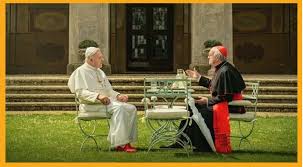
- Because the film is very sympathetic to Pope Francis (not neglecting the criticisms of him when he was Jesuit provincial in Argentina and was seen to side too much with the authorities), the portrait of him is more extensive than that of Pope Benedict. As indicated, we are taken back quite extensively to Cardinal Bergoglio’s life, black-and-white photography of him as a young man, searching for his vocation, a recurring image of him sitting alone in the mountains reflecting, the possibility for marriage, his choices and entry into the seminary (filmed in black and white). Audiences who might not be fully aware of the controversy about Bergoglio and the generals, his turn as provincial wanting to protect the lives of the Jesuits, asking them to close some of their ministries because they were considered too dangerous, some defiance and him on the part of social-minded, confreres, will find this section of the film quite arresting. But, there are sequences enabling Cardinal Bergoglio to admit mistakes publicly, to be sorry for the decisions that he had made, to reconcile with some of his conferences. These experiences enable him, as Archbishop of Buenos Aires to reach out to the poor.
- The Bergoglio who emerges from these sequences is an educated man, a religious leader, a man who admits mistakes, who is transformed into a social-minded pastor, an extrovert who is comfortable in meeting all kinds of people, enjoying their company (especially in supporting his football team, San Lorenzo), familiar with aspects of popular culture. (An amusing episode occurs where Benedict tells Francis that his piano CD was made it Abbey Road leads to a talk about the Beatles!)
- By contrast, there is no visual portrait of Benedict’s life. There are verbal references, and his saying that he was more introverted, bookish, intellectual, and had not any of the pastoral outreach of the Bergoglio. (Audiences may well enjoy a sequence where the two are in a side sacristy of the Sistine Chapel, tourists arriving, Benedict’s decision for the two to walk through the Chapel, the tourists becoming excited – and a number of selfies!).
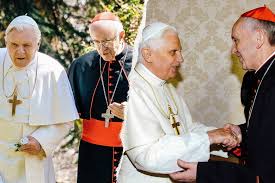
And so, the film and its narrative are multi-layered.
- The narrative goes back to the death of John Paul II and the preparations for the subsequent conclave, sequences of Cardinals discussing with each other, the possibility of Cardinal Bergoglio being elected, Cardinal Martini of Milan advising colleagues not to vote for him, Cardinal Ratzinger seemingly eager enough to become Pope. There is a dramatic tension in the conclave – the details of some of the voting, the black smoke, the white smoke, the emergence of Benedict, and Cardinal Bergoglio going back home, but seemingly steady pontificate.
- Towards the end of the film there will be the 2013 conclave, the discussions, the assembly, the voting, the acceptance – and Francis not wanting special shoes, not wanting the ermine cape (“the carnival is over”), emerging to the cheering crowds and simply saying, “Buena Sera” (good evening).
Audiences interested in the contrast between the approaches of Benedict and Francis will find these sequences illustrating the different points of view, the needs of the church in the 21st-century, the issue of clear guidance and authority compared with a more horizontal metaphor of the church rather than the hierarchical pyramid, pastoral needs and evangelisation.
- Which means then that involved Catholics, with faith and loyalty, will find this two hour immersion into the life of the church of great interest, of encouragement. For nominal Catholics, the film offers an occasion, even an invitation, to more thought and assessment, re-assessment. It will be the same for lapsed Catholics. For ecumenical and interfaith audiences, the drama is both attractive and thought-provoking. And for non-religious audiences, they will appreciate good drama, good writing and performances, character studies – and an opportunity to give further thought to the credibility, life and mission of the Catholic Church.

But, audiences will have two, at least, aspects of conversation about the film.
- Questions arise, as they have done during the two pontificates, about tradition and openness of the church. Vatican II was about opening the windows and renewal and updating. John Paul II was committed to doctrinal orthodoxy but also to extensive world travel, showing the human, and frequently genial, face of the church. Benedict, had to move out of his preference for reserve, and continue John Paul II’s two aspects of church life, authority as well as the human face. With Francis, and this is very strongly highlighted in the film, the tradition is important but the pastoral interpretation of tradition is the great challenge, the realities of evangelisation in the contemporary world, pastors and their having “the smell of the sheep”.
- Most most audiences will enjoy the way these emphases are illustrated, from his whistling Abba’s Dancing Queen (which actually is also used in the background as the fully robed Cardinals enter the Sistine Chapel for the conclave!), some Latin American musical background, Pope Francis trying to book a ticket to Lampedusa online and failing (the film actually opening and closing with this episode), buying pizza in a shop near the Vatican (and later persuading a Vatican authority to go out and get some takeaway pizza for himself and Benedict to enjoy), Francis and his TV football watching, his jokes. Benedict does not always get them, then realises that they are jokes – and, amusingly, when he himself makes a joke, not so funny, he tells Francis that this was a German joke and German jokes are not meant to be funny! So, the human face, the humour.
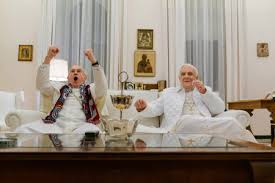
In these senses, The Two Popes might be seen as an exercise in evangelisation to the world in the Francis’ mode.
- At the core of the conversation is Benedict’s resignation. There is a dramatic build-up in so far as Cardinal Bergoglio travels to the Vatican, continually tries to persuade Benedict to accept his resignation. Because of the differences in perspective between the two, Benedict says that the resignation might be interpreted as a criticism of Benedict’s direction of the church. So, there is much discussion to illustrate the different perceptions of each of the men.
- However, with the issues of mismanagement in the Vatican bank, with the pressures of being Pope, Benedict’s advancing age, he turns the tables and shocks Bergoglio with the news that he wants to resign. Interesting that Bergoglio thinks that this is impossible, unthinkable. But, audiences will find fascinating this dramatising of the two points of view, the continuing conversations, Benedict reasoning, Francis’s change of mind – with a wry observation put in Benedict’s mouth that the papal successor usually acts as a corrective to the previous Pope and he will be glad to be alive to see his corrective! There are several mentions that rather than compromise, well-considered change is preferable.
- The bonds between the two men and increasing mutual understanding prepare them for the actual resignation, the amazement throughout the world, the next conclave (and a scene where Benedict watches the white smoke on television in the papal apartment), the emergence of Francis.
The film then takes the advantage of quoting Francis’s words of social concern, his first trip outside the Vatican to Lampedusa to meet refugees who had sailed across the Mediterranean from North Africa, images of small boats and overwhelming waves, the faces of those in need. To that extent, the ending is venture into preaching, social preaching.
Given the significance of the two Popes themselves, the papacy in the Catholic Church at the beginning of the 21st-century, the continued dialogue between tradition and pastoral outreach, the questions of what the Catholic Church should be and will be, The Two Popes is certainly worth watching – and watching again.
SIGNIS STATEMENT (WORLD CATHOLIC ASSOCIATION FOR COMMUNICATION) - PETER MALONE MSC
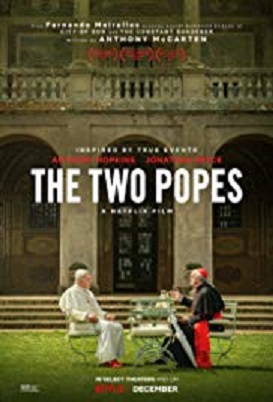
SOME SIGNIFICANT DECEMBER DAYS FOR THE CHEVALIER FAMILY, 2019
SOME SIGNIFICANT DECEMBER DAYS FOR THE CHEVALIER FAMILY, 2019
8th December, the anniversary of the foundation of the Congregation, 164 years ago.

Also the transferring of Mother Marie-Louise Hartzer to the Crypt at Issoudun.
And several dates significant for Fr Chevalier and Fr Maugenest - the novena for the foundation, ordination date and vows
3 December, 1970
Father Louis Vangeke, MSC, the first priest of PNG, appointed auxiliary of Port Moresby, is ordained Bishop by Pope Paul VI, in Sydney, Australia.
5 December, 1829

Birth of Emile Sebastian Maugenest , in Culan, France.
8 December, 1854
Father Chevalier and Father Maugenest end their novena to the Blessed Virgin.
It was planned to conclude on the day that Pius IX proclaimed Mary’s Immaculate Conception.
Father Chevalier always considered this day as the foundation day of the MSC Congregation, and it continues to be so today.
8 December, 1865
Beginning of the Annals of Our Lady of the Sacred Heart in France.
8 December, 1956
The Missionaries of Christ (MC) are founded by father C. Moser, MSC, in Germany. This is a community of religious missionary women, and it continues to exist today in six countries ~ Germany, Austria, Siberia, Congo (RDC), Brazil and South Africa.
8 December, 1982

On the occasion of the centenary of her entrance into the novitiate and nomination as FDNSC Superior, the body of Mother Marie-Louise Hartzer is transferred to the Crypt in the Basilica in Issoudun.
9 December, 1954
Profession of the first Peruvian MSC Sisters in Lima, Peru.
11 December, 1978
Father Gaspar Garcia Laviana, of the MSC Spanish Province, is killed in Nicaragua.
17 December, 1853
E.S. Maugenest, 'co-founder' with Father Chevalier of the MSC Congregation, was ordained priest at Saint-Sulpice, Paris.
Maugenest left the MSC Congregation on 31 December, 1871, after being parish priest in St Cyr for 10 years.
He entered the novitiate of the Dominican Fathers and ended his days as a Dominican. He and Chevalier always remained good friends.
25 December, 1856
First (private) vows of Father Chevalier and Father Maugenest.
27 December, 1870
The birth of Alain G. de Boismenu in Saint-Malo, France. He was Vicar Apostolic of PNG from 1922-1946 and later Titular Archbishop. His cause has been put forward for beatification.
28 December, 1864
At four o'clock in the morning Father Victor Jouët arrived in Issoudun for the first time and discovers the statue of Our Lady of the Sacred Heart. "... I fall at the feet of your enchanting image, and I stand up as your missionary for life. In one second, what a grace!"


